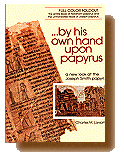|
How do you lose a steel mill? By Frank R. Zindler |
|
|
| The Complete 101 Book Library of Atheism | An Atheist's Guide to Mohammedanism | ||
The next time Mormon missionaries come calling at your door, invite them in. You have an obligation to educate them. But before you can bring them to understand the error of their ways, it is necessary to get their attention - I mean really get their attention. This you can do by asking them, as you help them remove their coats, if they are wearing their magic underwear - their so-called "temple endowments." Ask them to explain the theory behind their magic unmentionables; especially ask for the reason why up until 1923 they were made with open crotches - and then ask them if their long johns can protect them against logic and science.
The missionaries will probably be a bit surprised to hear that they need protection against logic and science, so you will have to show them some of the ways in which Mormonism is falsified by science. For example, the Book of Mormon implies that Jews fleeing from Jerusalem shortly before and after 600 B.C.E. (Before the Common Era) made their way to South or Central America and turned into Indians. Of course, the magical aspects of this story lie outside the scope of science. Nevertheless, if Jews were transformed into Amerindians just a few millennia ago, there are ways in which scientific methods could be used to falsify or verify the fact.
|
He is a member of the American Association for the Advancement of Science, the American Chemical Society, and the American Schools of Oriental Research.
Links: |
Recently it has been possible to work out the genetic relations of all the major human populations in the world by comparing the DNA molecules carried in the mitochondria of human cells. Mitochondria are the powerhouses of the cell, and they are inherited only along
the maternal line. In a seminal paper published in the British journal Nature Rebecca Cann and her coworkers analyzed the mitochondrial DNA from all major groups of humans on the planet and found that all human mitochondrial DNAs could be derived from just a single woman living in Africa approximately 200,000 years ago. (Of course, this does not mean that all humans living today had only one ancestor alive at that time; it simply means that all mitochondria, as a result of hazards of transmission, are derived from just one female of that prehistoric generation.) Although it is difficult to identify all the twigs on the genealogical tree in the article cited, it is clear that the authors did not find any surprising link between American Indians and Jews. They refer to "Asians or American Indians," and Jews aren't even mentioned - presumably because they do not differ significantly from other Caucasians. Mormon apologists are invited to do their own DNA comparisons. Until they do, we may consider the transmogrification of Jews into Amerindians mere phantasy.
Archaeology is another science that has much to say about the Mormon idea that Mesopotamians and Israelites came to America around 3000 and 600 B.C.E., respectively, and originated the cultures and populations of the New World. When Joseph Smith saw how easy it was to pull people's legs, he made up an incredible story about Jaredites escaping from the Tower of Babel in Mesopotamia, building barrels which were more barrels than boats, and floating to America in these sealed vessels - after "the Lord caused stones to shine in darkness, to give light unto men, women, and children, that they might not cross the great waters in darkness" (Ether 6:3).
When Smith's disciples swallowed this story without a smile, Smith stretched their legs further. The kingdom founded by the Jaredites - I'm not making this up - was known as "the land of Moron."
In addition to the Jaredites, Smith created Nephites and Mulekites to help populate ancient America and take part in a drama so taut and exciting that Mark Twain referred to their history as "chloroform in print." (Twain seems to be confused in the area of anesthesiology. Readers will note from the Book of Mormon quote above that Smith's book contains Ether in print, not chloroform.) The Nephites are supposed to have escaped Jerusalem shortly before the destruction of the city in 587 B.C.E., the Mulekites shortly thereafter. The Nephites sailed east from Palestine and came ashore in South or Central America. The Mulekites are inferred to have crossed the Atlantic and landed on the Caribbean coast of Central America. Just what it was about the American environment that caused all these Caucasians to turn into Amerindians is unclear, but most Mormons will tell you it was "sin" that did it.
The Fauna Of The Book Of Mormon
When Smith published his "golden bible " in 1830, he gave elephants to his Jaredite actors, along with asses, cows, oxen, and horses. While this may seem startling to readers today, in upstate New York in the 1930s there was nothing odd about this. Thomas Jefferson had discovered the remains of an extinct mammoth, and it was probably widely assumed that ancient Amerindians had domesticated elephants in the way that modern Indians have done. I doubt that many rural New Yorkers then knew that the Amerindians had had no horses or cows until they got them from the Spaniards.
Although horses originated in North America, they - along with the various American species of "elephants" - went extinct many thousands of years before anything that could be called civilization had evolved in Central or South America. At no time were cows present before the advent ofHispanic culture. No certain remains of preColumbian horses, asses, or cows have ever been found in the Americas. Even in the improbable event that rare, relict populations of wild horses in the remote regions of South America or elsewhere managed to survive the mass extinction of the American megafauna that occurred at the end of the Pleistocene epoch, it is an archaeological certainty that no horses ever pulled the chariots of Jewish Aztecs or Babylonian Mayas - or should it be Babylonian Aztecs and Jewish Mayas?
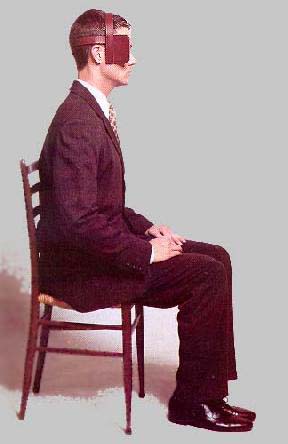 No animal-drawn wheeled vehicles were ever used in pre-Columbian America. No chariots.
The reason is that there were no suitable draft animals to pull them. Despite Joseph
Smith's claim that his ancient American Christians had cows and oxen, none existed in
America before the Spaniards brought them. With only the exception of the bison and the
reindeer - notably scarce in Mexico where the major Book of Mormon civilizations are
alleged to have existed - no animals existed in America suitable for pulling chariots or
wagons. The closest thing to an American draft animal is the llama, but during the entire
domestication history of this Andean animal it was used to carry packs, not to pull
vehicles.
No animal-drawn wheeled vehicles were ever used in pre-Columbian America. No chariots.
The reason is that there were no suitable draft animals to pull them. Despite Joseph
Smith's claim that his ancient American Christians had cows and oxen, none existed in
America before the Spaniards brought them. With only the exception of the bison and the
reindeer - notably scarce in Mexico where the major Book of Mormon civilizations are
alleged to have existed - no animals existed in America suitable for pulling chariots or
wagons. The closest thing to an American draft animal is the llama, but during the entire
domestication history of this Andean animal it was used to carry packs, not to pull
vehicles.
It goes without saying that this problem worries Mormon apologists a great deal. Arguments both ingenious and specious have been constructed to deal with it. In his book An Ancient American Setting for the Book of Mormon, John Sorenson, one of the most imaginative of the apologists to deal with this problem, argues that it is very difficult to know exactly what the ancients actually meant by such words as horse, cow, or chariot. Typical of his modus operandi is his attempt to explain away the fact that no pre-Columbian cows have ever been discovered in America:
But isn't it obvious that the "cow" of the Book of Mormon was our familiar bovine, straight out without all this hedging? No, it is not at all obvious. First, we are trying to find out what the Book of Mormon really means by the words we have in English translation; we are not trying either to simplify or to complicate the matter, but only to be correct. In the effort to learn the truth, nothing can be assumed obvious. Second, there is a lack of reliable evidence - historical, archaeological, zoological, or linguistic - that Old World cows were present in the Americas in pre-Columbian times. The same is true of some of the other creatures mentioned in the Nephite record, where modern readers may feel they are already familiar with the animals on the basis of the translated names. In these cases we have to find another way to read the text in order to make sense of it.
So what might the Nephite term translated by Joseph Smith as cow actually have signified?
Sorenson goes on to suggest that the "cows" to which his prophet referred might actually have been deer, bison, alpacas, or llamas. Stretched out over the space of many pages, this type of argument is effectively seductive. But it suffers from a most serious defect. If we were dealing with ordinary translations done by ordinary scholars, his point would be very important. But we are not dealing with an ordinary translation done by someone with nothing more than a doctorate from Oxford. We are told on the title page itself that the Book of Mormon is "an account written by the hand of Mormon upon plates taken from the plates of Nephi ... To come forth by the gift and power of God unto the interpretation thereof Sealed by the hand of Moroni, and hid up unto the Lord, to come forth in due time by way of the Gentile - The interpretation thereof by the gift of God,"
Several pages later, in the "Testimony of the Prophet Joseph Smith," we are told:
There were two stones in silver bows - and these stones, fastened to a breastplate, constituted what is called the Urim and Thummim deposited with the plates; and the possession and use of these stones were what Constituted Seers in ancient or former times; and that God had prepared them for the purpose of translating the book.
If Sorenson is correct in his suggestion that the cows and horses referred to in the Book of Mormon aren't really cows and horses - even though the book not only was translated with the aid of Urim and Thummim, but interpreted "by the gift and power of God" - Mormons are on the horns of a terrible dilemma. If god told Joseph Smith to translate deer or llama as cow, he is either incompetent or a liar. If god lies about llamas, why wouldn't he fib about faith? Of course, the Thummim may have blown a transistor, or the angel Moroni may have forgotten to provide the batteries for the Urim. On the other hand, it might all be the fault of the typesetter!
 The God Makers by Ed Decker, Dave Hunt Get one for a friend |
 No Man Knows My History: The Life of Joseph Smith, The Mormon Prophet by Fawn McKay Brodie, Peter Dimock (Editor) |
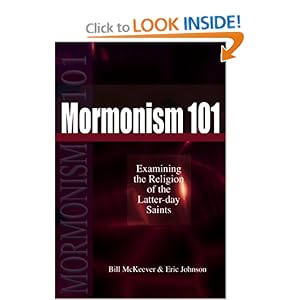 Mormonism 101: Examining the Religion of the Latter-day Saints by Bill McKeever, Eric Johnson |
Why I Am Not a Christian, |
Returning to the subject of chariots, we may observe that chariots tend to be possessed of wheels. Contrary to the divine revelation claimed by Joseph Smith, the Amerindians never made any practical use of the wheel. The only native wheels known to archaeology are the great stone wheels used for calendars and the wheels found in children's toys. If delicate wheeled toys have survived the centuries, should not full-fledged chariots and carts have survived also? If the societies in question had wheeled vehicles for a period of more than three millennia, would we not expect to find wall paintings of them in Mexican temples and tombs? Wouldn't we find proud murals of Aztec kings driving their chariots in triumphal parades? Would we not see pictures of humble farmer-serfs tilling the king's fields with horse-drawn ploughs and hauling produce to the king in oxcarts? Once again, we see the falseness of the Mormon prophet's "inspiration."
When one reads works of fiction such as the Bible or the Book of Mormon, it is absolutely necessary to play the what-if / then / what game. One should ask questions like, "What if Caesar Augustus really did proclaim a census where everyone had to return to an ancestral home to be counted? What would have happened then?"
In the case of the Book of Mormon, we may ask "What if the ancient Amerindians did have horses and chariots? What are the implications?" For one thing, we would expect to find the remains of stone bridges and highways - not footpaths - all over the continents of North and South America (or at least ad over Central America, d the Mormon revisionist geographers are to be considered). To be sure, we do know of the great highways that the Incas built. But alas for the Book of Mormon, the Inca highways were built a thousand years after the close of the Mormon story. Moreover, we know that it was runners and llamas carrying packs that traveled these highways, not horses with chariots or oxen with carts.
If horses and chariots were a common part of Amerindian life in ancient times, we should find words for horses and chariots in all the native languages - especially if they are all corrupt forms of Hebrew and Sumerian, as implied by the Book of Mormon! We should find words for bit, bridle, harness, wagon, headstall, snaffle, martingale, etc. If the Amerindians had plows to go with their horses and oxen, as Smith's novel clearly implies, we should find some - including steel ones (see discussion of steel in last section of this article). We need to know, moreover, why the only tilling tools we have ever found in the Maya territory are fire-hardened digging sticks and stone axes. Why would people so on making stone tools d they had access to iron and steel ones? As we shall see, all archaeological evidence of pre-Columbian agriculture paints a picture which is totally incompatible with the European-style agriculture implied by the Mormon stories.
Mormon Agriculture
When Joseph Smith concocted the Book of Mormon, he just assumed that the ancient Amerindians had the same kind of agriculture as that which he knew in upstate New York. Consequently, he had his ancient characters growing wheat, barley, corn, and flax, and planting vineyards for wine, and being able to understand the symbolism of the olive and trees. Now, of course, Smith was right about the corn - that is, maize. But is there anyone of Smith's day who had not heard of "Indian corn," or did not know that corn had come from the Indians? What Smith did not know, however, was that corn was but one of three staple crops raised by the Indians of Central America - the region in which the discovery of ruined civilizations had triggered enormous amounts of speculation in the time of Smith's youth. The other two major crops were squash and beans. These were supplemented by such things as avocados, amaranth, etc. You can search all you want in the Book of Mormon, but you won't find any mention, apart from corn, of the crops actually raised in ancient America. Incidentally, we have numerous cases where these crops have been preserved in archaeological sites and are easily identifiable.
What does archaeology tell us of the presence or absence of the crops Smith claimed were the staples of ancient America? No remains of wheat or domesticated barley have ever been found. In fact, the one possible pre-Columbian specimen of barley discovered at a site in Arizona is of a species different from the species of domesticated barley allegedly brought from the Near East. And what of flax? No dice, again. Fortunately for lovers of truth, the Mormon apologists cannot simply say we haven't been looking in the right place, or that the remains of these plants have all perished with the passage of time. The reason for our good fortune is the fact that these domestic plants are all flowering plants. As such, they produce pollen - in great abundance. If the so-called Mormonic civilizations had been growing these crops for even a few decades - let alone the thousands of years allegedly chronicled by the Book of Mormon - every soil coring taken in Central America should show traces of wheat, barley, and flax pollen. Pollen is one of the most indestructible natural objects known.
An example of the type of research that shows Book of Mormon agriculture to be nineteenth century phantasy is David J. Rue's 1987 paper in Nature titled "Early Agriculture and Early Postclassic Maya Occupation in Western Honduras." By studying soil corings from Lake Yojoa and Petapida Swamp, both in western Honduras, Rue was able to reconstruct the agricultural history of the area from a time 4770 years before the present up to modem times. He could tell from pollen when the region was forested, when the forest was cut and burned for agriculture, what crops were grown and for how long. Although he found clear records of pollen from corn (maize) and amaranth - two Amerindian staples - he makes no mention of wheat, barley, or flax pollen. Perhaps the Mormon Church would like to pay him to go through his cores again, looking more carefully for the mythical motes that should be in them if the Book of Mormon be true!
"Silks And Linens"
When Smith created the costuming for the characters in his unhistorical novel (that was quite a while before god told him he should be sleeping with more than one woman), he had no knowledge of the types of cloth known to the ancient Amerindians. So he saw no problem in having his ancient Mexicans wearing linens and silks. Now linen is made from the fibers of the flax plant, specifically the species known as Linum usitatissimum. This species is native to the Old World and was unknown in America before the coming of the Spaniards. It is quite certain that this species of plant did not grow in America during the three-thousand-year period allegedly chronicled by the Book of Mormon. The reason we can be so certain is that flax pollen of this species has never been found in any soil corings. It is unthinkable that flax for linen could have been grown commercially and not have contributed its pollen to the spore library yearly accumulating at the bottoms of lakes, swamps, and ponds. Ordinary soils unearthed by archaeologists should contain it, along with the pollens of wheat and barley, as we have already noted.
Instead of weaving flax fibers into linen, the ancient Americans wove cotton into cloth. In fact, the ancient Mexicans were weaving cotton fabrics by the year 5000 B.C.E. - at least two millennia before the time of the Jaredites, the mythical escapees from the Tower of Babel, who Smith claimed had floated to America in a barrel! Will readers be surprised to learn that the Book of Mormon makes no mention at all of cotton? Neither god nor Joseph Smith seems to have known what the Mexicans were substituting for fig leaves.
Smith's imposture in the Book of Mormon goes even further, however. He has many of his characters wearing silk - some as early as 600 B.C.E.! Now this is funnier than is immediately apparent. The manufacture of silk began in China and was kept as a trade secret for several thousand years. Although silk fabrics had found their way from China to the Mediterranean world by the time of Aristotle, no one in the West knew how silk was made. It was not until the year 552 C.E. that two Nestorian monks, who had lived in China, smuggled a small number of silkworm eggs out of China and brought them, together with the method for making silk, to Constantinople. This means that the Mormon prophet Lehi, who allegedly escaped from Jerusalem more than a thousand years before this date, before the Exile, could not have brought a knowledge of sericulture to the New World. Although remains of ancient fabrics have been found all over the Americas, no one has ever found remains of pre-Columbian silk. The closest thing to silks made by the Amerindians were fabrics spun from rabbit hair or the fibers of ceiba pods. Although moths of the silkworm family (Saturnidae) do exist in the Americas, it is all but impossible to unwind the agglutinated and tangled silk fibers from their cocoons. Smith could not have been more off base if he had written that the Jaredites were selling nylons on the black market.
The Book of Mormon assumes a money economy existed in ancient America and gives
names and values for a variety of gold and silver coins:
Now these are the names of the different pieces of their gold, and of their silver,
according to their value ...
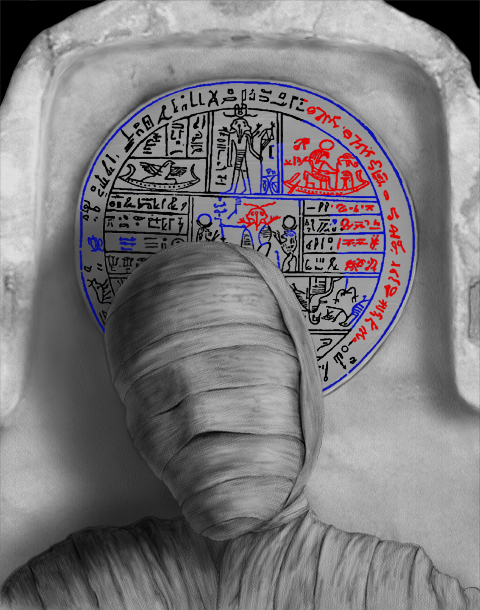 JOSEPH SMITH PAPYRI |
|
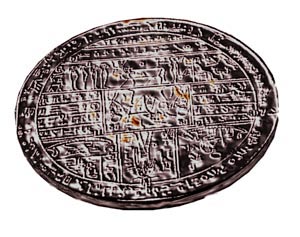 MORMON COINS |
Leaving the Mormons to worry about how to make change for a "limnah," we note simply that although the ancient Americans had gold and silver in abundance, they never made coins or evolved a money economy. They used jade beads, obsidian blades, and even cacao beans as media of exchange. Never did they mint coins or create a standardized system of metal money.
Any single one of the archaeological impossibilities we have pointed out thus far should be enough to convince an unbiased scientist that the Book of Mormon is a fiction. All the more so, if we combine all the individually convincing evidences together, we must see that the fraudulence of the Book of Mormon is proven beyond any shadow of a doubt. Remember this the next time youthful "elders" knock on your front door.
Moronic And Mormonic Metallurgy
According to the Book of Ether, the Jaredites knew how to make steel:
And it came to pass that Shule was angry with his brother ... Wherefore, he came to the hill Ephraim, and he did molten out of the hill, and made swords out of steel for those whom he had drawn away with him; and after he had armed them with swords he returned to the city Nehor, and gave battle unto his brother Corihor ... (Ether 7:8-9)
According to Mormon apologist David A. Paimer, this steel making occurred around the year 2500 B.C.E.! This precedes by more than a millennium the time at which ironworking (let alone steel making!) came to Mesopotamia, the region whence the Jaredites allegedly had come! Despite the fact that the "Morons" possessed weapons of steel, they didn't do too well. According to Paimer, in the year 2430 B.C.E. the "Moron population was reduced to 30 by wars." (There is no evidence that Palmer snickered when he penned the quoted line.)
 |
God's Debris Scott Adams (of Dilbert Comics)
"A belief
in God would |
 The Jesus the Jews Never Knew Sepher Toldoth Yeshu and the Quest of the Historical Jesus in Jewish Sources |
|
But Morons were not the only ancient Americans alleged to have worked in steel. Nephites also, before they were transformed from Jews into Indians, worked in steel and other metals around the year 575 B.C.E.:
And I [Nephi] did teach my people to build buildings, and to work in all manner of wood, and of iron, and of copper, and of brass, and of steel, and of gold, and of silver, and of precious ores, which were in great abundance. (2 Nephi 5:15)
As we have seen, the Book of Mormon story covers a period of time stretching from 3000 B.C.E. to 400 C.E. During that period, many millions of people possessed of steel and brass technology are alleged to have lived and died somewhere in the Americas. It is strange, therefore, to note that no one has ever found any steel artifact datable to Pre-Columbian times. Although a few ancient objects made of meteoric iron have been discovered in America as well as in Eurasia, no objects made of smelted iron have ever been found in America - even though billions of such things should have been made if the Book of Mormon story were true.
Now, of course, the defenders of the Mormon kingdom might say we just haven't been looking in the right place. Alas for the apologists, the Book of Mormon tells us precisely where to look for such artifacts. It claims that between one-half and one million steel-owning people died all at once, in one spot, around the year 400 C.E., in a climactic battle at "Hill Cumorah." According to Mormon tradition, Hill Cumorah is a glacial drumlin situated near the upstate New York town of Palmyra. It is the site of an annual "Mormon Pageant." Mormon revisionist geographers, however, place the hill in the Tuxtla Mountains, in the Mexican state of Veracruz.
If the Book of Mormon were true, either the hill in New York or the hill in Mexico should be one enormous pile of rusted iron (from the swords and other steel objects) and phosphate (from the bones of all the people slain). It would be a valuable source of scrap iron and phosphate fertilizer!
 A Senine of silver |
As crazy as all this may seem, there's more to the Mormon story which is even crazier. According to the Book of Ether, there was an earlier battle in which even more people were slain at one spot:
And it came to pass when Coriantumr had recovered of his wounds - . . He saw that there had been slain by the sword [more steel!] already nearly two millions of his people, and he began to sorrow in his heart; yea, there had been slain two millions of mighty men, and also their wives and their children ... (Ether 15: 1-2)
Assuming that "mighty men" would com. prise from one-third to one-fifth of a population, we must conclude that six to ten million Jaredites deposited their steel and their bones at the site of the battle in question. If the Mormon writer David Palmer is correct in his belief that Hill Ramah (where the Jaredites died) and Hill Cumorah (where most everyone else died) are the same hill, and that both are to be identified with Cerro El Vigia in the Tuxtla Mountains, it would seem that satellites equipped with magnetometers should be able to verify the fact easily.
But neither iron nor phosphate is found at Hill Cumorah in New York, nor will it be found - I am prophesying - in the volcanic Tuxtla Mountains in Veracruz. Not surprisingly, the Mormon Church conducts no mining operations at the Palmyra site. The only thing of importance occurring there is the annual falsification of American history.
In concluding our discussion of how Mormon mythology has fallen on its own (steel) sword, we must make one final observation. If millions and millions of people made and used weapons and tools of steel for a period spanning more than three millennia, not only should archaeologists find plentiful remains of swords, chariot axles, anvils, sickles, and many other iron-based artifacts, they should be finding the remains of steel mills all over the territory covered by Smith's cast of characters! It is perfectly conceivable that one might lose a steel sword. But how in hell can you lose a steel mill?!
Ask the missionaries the next time they call.
Frank Zindler: The Future of Science | In Memoriam of the O'Hair family
It's a Treasure! ...and
it's FREE
 |
|
|
God's Debris |
Synopsis
Imagine
that you meet a very old man who — you eventually realize — knows
literally everything. Imagine that he explains for you the great
mysteries of life — quantum physics, evolution, God, gravity, light,
psychic phenomenon, and probability — in a way so simple, so
novel, and so compelling that it all fits together and makes perfect
sense. What does it feel like to suddenly understand everything? God's
Debris isn’t the final answer to the Big Questions. But it might be the
most compelling vision of reality you will ever read. The thought
experiment is this: Try to figure out what’s wrong with the old
man’s explanation of reality. Share the book with your smart
friends for FREE, then discuss it later while enjoying a beverage. If the FREE download does not work, go here - pdf - txt |
The Complete 101 Book Library of Atheism
 Page
by...
Page
by...
notes: Rebecca L. Cann, Mark Stoneking, and Allan C. Wilson,
"Mitochondrial DNA and Human Evolution," Nature 325 (January 1, 1987):31-36.
(Use browser's BACK
button to return)
John L. Sorenson, the chairman of the Department of Anthropology at Brigham Young University, in his book An Ancient American Setting for the Book of Mormon (Salt Lake City, Utah: Deseret Book Co., 1985), cites alleged findings of pre-Columbian horse remains, but none of the cases cited appear to be clear-cut enough to establish the thesis that the Amerindians had everyday use of horses and chariots. The case Sorenson considers to be the most solid evidence that the Maya had horses is in a brief note published on page 278 of the Journal of Mammalogy, vol. 38 (1957). Written by Clayton E. Ray of the Harvard Museum of Comparative Zoology, the note tells of "horse remains of probable preColumbian age from a new locality in Yucatan. This material consists of one complete upper molar and three fragmentary lower molars ... obtained by archaeologists ... during excavation at the Mayan ruins of Mayapan ... The teeth were collected in the cenote Ch'en Mul ... from the bottom stratum in a sequence of unconsolidated earth almost two meters in thickness ... The horse teeth are not specifically identifiable. They are considered to be preColumbian on the basis of depth of burial and degree of mineralization ...
"It is by no means implied that preColumbian horses were known to the Mayans, but it seems likely that horses were present on the Yucatan Peninsula in preMayan times. The tooth fragments reported here could have been transported in fossil condition as curios by the Mayans . . ."
Thus do the true believers grasp at straws - unaware that even wheat straw itself was
not available in pre-Columbian America.
(Use browser's BACK
button to return)
At the end of this prefatory statement, Smith hedges a bit. "And now," he
concludes, "if there are faults they are the mistakes of men; Wherefore, condemn not
the things of God, that ye may be found spotless at the judgment-seat of Christ." We
suppose that at this point Smith remembered the grades he had gotten in spelling and also
felt the general utility of being able to blame bloopers on secretaries and typesetters.
(Use browser's BACK
button to return)
David J. Rue, "Early Agriculture and Early Postclassic Maya Occupation in
Western Honduras", Nature 326 (March 1987): 285-86.
(Use browser's BACK
button to return)
Although the word coin does not appear in the Book of Mormon text, the header to
Chapter 11 of the Book of Alma reads "Nephite coinage set forth." Mormon
apologists claim that weighed pieces of bullion, not coins, are being described. The
difference between coins and small, standardized pieces of bullion seems trivial. In any
event, standardized, graduated denominations of gold or silver bullion are also unknown in
American archaeology.
(Use browser's BACK
button to return)
David A. Palmer, In Search of Cumorah: New Euidences for the Book of
Mormon from Ancient Mexico (Bountiful, Utah: Horizon Publishers, 1981), 128.
81bid., 128.
(Use browser's BACK
button to return)
'Unquestionably it was time, is the comment Mark Twain makes at this point in his
commentary on the passage in question. Twain dealt with the Mormon bible in his book
Roughing
It.
(Use browser's BACK button to
return)
Besides meteoric iron, which we have noted was used to a limited extent by the
Amerindians, a number of objects such as ornamental mirrors were made from unsmelted iron
ores such as magnetite and specular hematite. These oxide ores may be highly metallic and
mirror-like and were stuck onto specially prepared mirror backs and polished to produce
highly reflective surfaces. Such objects hardly can be used as evidence that the ancient
Americans knew how to smelt iron ores and work them into swords of "steel."
(Use browser's BACK button to
return)
The closest thing to a fossil steel mill that has ever been discovered in America, as
far as I can tell, is a ceramic pot from Teotihuacan. Dating from about 300 C.E., the pot
contained a "metallic-lookinq" mass of copper contaminated with iron. Whatever
sort of technology this artifact may prove to have represented, a Bessemer converter it
was not!
(Use browser's BACK
button to return)
ABOUT THE AUTHOR
Formerly a professor of biology and geology, Frank R. Zindler is now a science writer. He is a member of the American Association for the Advancement of Science, the American Chemical Society, and the American Schools of Oriental Research. He is the director of the Central Ohio Chapter of American Atheists.
 Page
by...
Page
by...


 FRANK
ZINDLER
FRANK
ZINDLER

